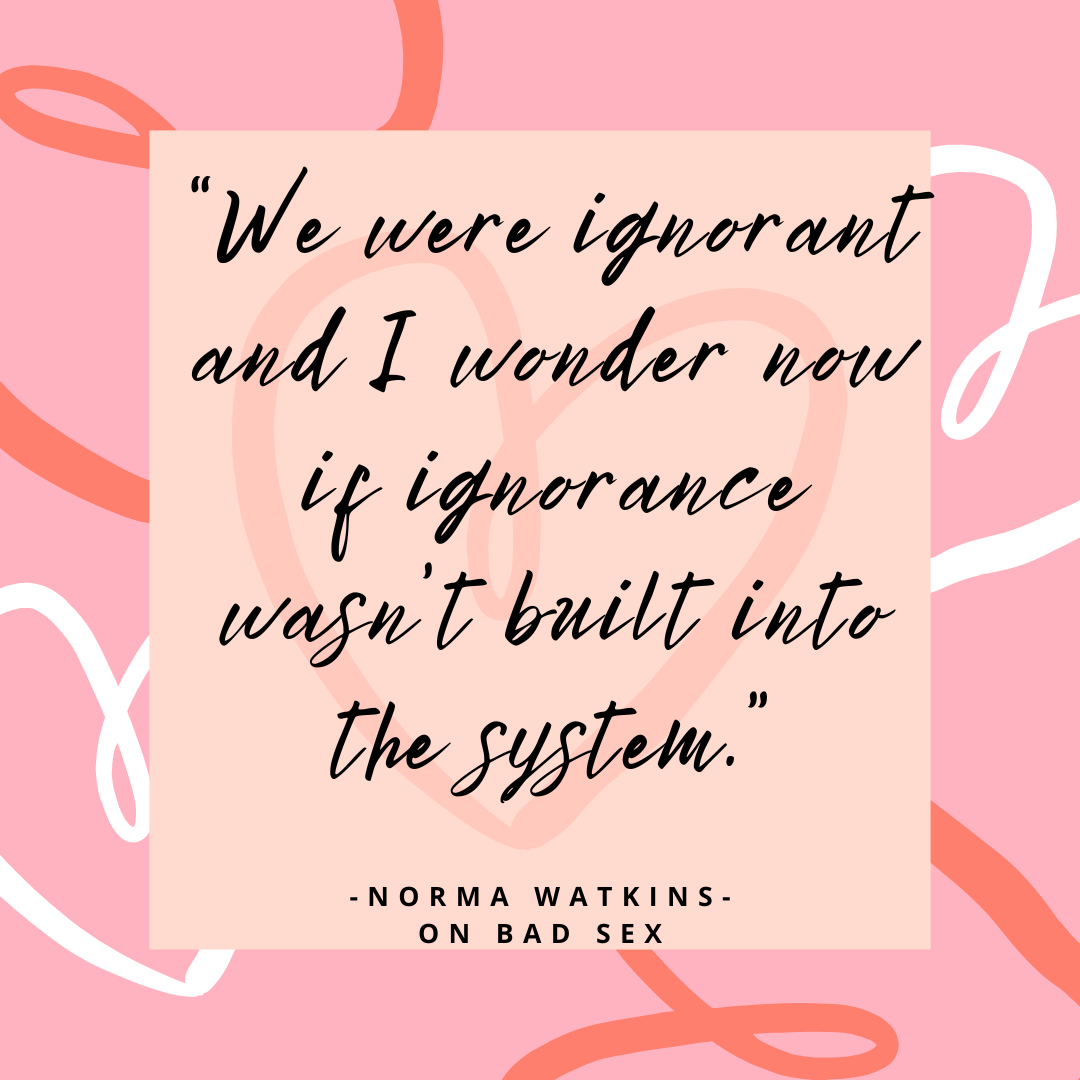By: Norma Watkins
Young women coming up in the middle of the last century were not supposed to think about sex, much less have any. Sex was what happened after you got married and before you were blessed with a child, preferably male. In middle school, we were shown a film about menstruation, an experience so embarrassing, girls and boys were not allowed to view it together. That was the end of sex education. The lesson appeared to be: after a girl got “the curse,” she could get pregnant, and it was a proper young lady’s responsibility to keep uncontrollable males from going too far. No explanation or excuse for the feelings of lust roiling inside our own bodies.
Boys set up residence in my head at fourteen, cleaning out what little sense I had. I was obsessed with sex. I thought about it, dreamed about it, and tried to find books that might give me some idea how it was done. Most novels were sadly deceptive, ending love scenes with “and then he took her,” or “the storm echoed their passion.” Even those paltry descriptions filled me with scalded longing. Out there somewhere was perfect lovemaking, and when you found it, when a boy put his thing inside you, bells rang; you fainted into ecstasy; you were fulfilled. Reading about it, I felt pretty sure if a boy got anywhere near me with his thing, it would probably work.
My first experience, in the back seat of a Buick, turned out to be nasty, painful, and short. At least I didn’t get pregnant. Never mind, I would wait for marriage and real fulfillment. On our wedding night, my new husband nibbled on a breast, pushed inside me, and came. It hurt like hell. After several repeats, I asked when things might get better for me. “Takes time,” he said, “maybe three years.” Three years! None of the magazines I read gave any helpful advice beyond “satisfying your husband.” My friends did not discuss sex, and I was too embarrassed to admit I’d never had an orgasm.
After giving birth to four children, I finally got up the nerve to ask a doctor for help. I explained the situation while he studied his desk blotter. When I finished, he said, “When my wife and I first moved South, I didn’t like turnip greens, but I ate them a couple times a week and now I like them.” I told him I’d been eating the turnip greens for ten years.
We were ignorant and I wonder now if ignorance wasn’t built into the system. Men appeared to have no problem with satisfaction, and women who complained too much could be labeled hysterical. If you got overly hysterical, a friendly judge would be happy to place you in an institution. Sex was for procreation and a real lady was not expected to enjoy it.
Good sex was for bad women, and I finally learned how to be one.
Norma Watkins has a Ph.D. in English and an M.F.A. in Creative Writing. Her memoir, The Last Resort: Taking the Mississippi Cure, won a gold medal as best non-fiction published in the southeast by an independent publisher. The sequel, That Woman from Mississippi, relates the consequences of impulsivity and exile. She publishes short pieces in newspapers and anthologies (See Stories). Watkins lives with her woodworker husband Les and two cats on the Mendocino Coast of California.






